
Aboriginal Court Cases & Consultations
Ross River Dena Council v. Government of Yukon In Ross River Dena Council v. Government of Yukon, the Ross River Dena Council (RRDC) sought a declaration that the Government of Yukon had a duty to consult prior to recording the grant of quartz mineral claims within the traditional territory of the First Nation. The Quartz Mining Act of Yukon, in common with other so-called "free entry mining regimes," characterized by the ability of the miner to locate or stake a claim on any open lands that are not already subject to a claim by another miner. Recording a claim under the Act immediately confers on the claim holder the ability to carry out exploration activities without obtaining any additional permits or approvals and without providing any notice to the Crown or First Nations.
In Ross River Dena Council v. Government of Yukon, the Ross River Dena Council (RRDC) sought a declaration that the Government of Yukon had a duty to consult prior to recording the grant of quartz mineral claims within the traditional territory of the First Nation. The Quartz Mining Act of Yukon, in common with other so-called "free entry mining regimes," characterized by the ability of the miner to locate or stake a claim on any open lands that are not already subject to a claim by another miner. Recording a claim under the Act immediately confers on the claim holder the ability to carry out exploration activities without obtaining any additional permits or approvals and without providing any notice to the Crown or First Nations.The lower court had held that the recording of a claim met the three-part test set out by the Supreme Court of Canada to determine whether the Crown's duty to consult is triggered: (i) the Crown had knowledge of RRDC's asserted aboriginal claims; (ii) there was contemplated Crown conduct in the form of the recording of a mineral claim; and (iii) there was a potential that the Crown's conduct may adversely affect RRDC's claims. While the Court of Appeal agreed with the lower court on most points, it went further by finding that the granting of the mineral claim by itself potentially impacts aboriginal title. It is a significant conclusion that the registration of a mining claim, by itself, can impact a potential claim of Aboriginal title. As a result, this decision may have much broader implications for mining dispositions in other Canadian jurisdictions. This principle could pose serious challenges to existing mineral tenure regimes under most mining statutes in Canada. While acknowledging the importance of free entry, the Court of Appeal found that constitutional duties owed to First Nations must nevertheless be fulfilled. View December 27, 2012 Yukon Court of Appeal decision (PDF)View January 2013 Robin M. Junger and Brittnee Russell, McMillan LLP article View January 28, 2013 Sam Adkins and Thomas F. Isaac, McCarthy Tétrault LLP, article View January 23, 2013 Sam Adkins and Thomas F. Isaac, McCarthy Tétrault LLP article View January 15, 2013 University of Alberta, ABLawg article Daniels v. Canada On January 8, 2013, Justice Phelan of the Federal Court issued a decision declaring that: "Métis and non-status Indians are 'Indians' within the meaning of the expression 'Indians and lands reserved for Indians' in s 91(24) of the Constitution Act, 1867." The decision confirmed a previous 1939 Supreme Court of Canada decision, Re Eskimo Reference, which made essentially the same finding regarding the Inuit.
On January 8, 2013, Justice Phelan of the Federal Court issued a decision declaring that: "Métis and non-status Indians are 'Indians' within the meaning of the expression 'Indians and lands reserved for Indians' in s 91(24) of the Constitution Act, 1867." The decision confirmed a previous 1939 Supreme Court of Canada decision, Re Eskimo Reference, which made essentially the same finding regarding the Inuit.It is important to keep in mind that the Daniels decision is only about s. 91(24), i.e. it is about the scope of federal powers. It is not about other laws. So, it does not say anything about things like who has status under the Indian Act, or who has aboriginal or treaty rights under s. 35 of the Constitution Act, 1982. The court also did not grant the requested declaration on the federal government's fiduciary duty, though it clearly states that one would likely flow from this decision, and implies that the same would be true of the declaration sought regarding the duty to consult when cases are brought on those subjects specifically. The case was initially launched by the late Harry Daniels, a long-time champion of Métis rights and President of the Congress of Aboriginal Peoples from 1975 to 1981 and again between 1997 and 2000. Sadly Daniels, who passed away in 2004, was unable to witness this verdict, which has significance for more than a half million aboriginal people in Canada. View January 29, 2013 Osgoode Hall Law School: The Court blog postView January 18, 2013 Rabble.ca coverage View January 8, 2013 Federal Court of Canada decision, Daniels v. Canada View January 8, 2013 Ontario Congress of Aboriginal Peoples press release View April 5, 1939 Supreme Court of Canada, Re Eskimo Reference View Métis National Council - Biography of Harry Daniels KI Conflict Continues Despite Land Withdrawal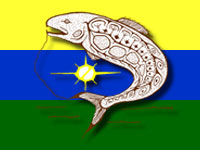 The province of Ontario has removed 23,000 square kilometres of land near Kitchenuhmaykoosib Inninuwug (KI) First Nation from future mining claims.
The province of Ontario has removed 23,000 square kilometres of land near Kitchenuhmaykoosib Inninuwug (KI) First Nation from future mining claims.The new restrictions, however, do not affect the God's Lake Resources Sherman Lake Gold Project located about 400 kilometres north of Red Lake Ontario. The gold mining company wants to drill in an area where the First Nation says its ancestors are buried. The company is expected to begin their prospecting this month and have hired a security firm to protect its workers when entering KI territory. KI leaders were in Toronto March 6, 2012 to rally outside the Prospectors and Developers Association of Canada (PDAC) convention - the largest mining industry event of its type in the world. KI Chief Donny Morris travelled to the Sherman Lake site March 7, 2012 to guard against trespass by mining exploration company Gods Lake Resources (GLR). "I cannot allow our graves to be desecrated by a company that is hiring guns to block us on our own land. That is no way to do business," said KI Chief Donny Morris Seven years ago KI was in a similar situation with Toronto-based mining company Platinex. During that struggle, six KI leaders were jailed for six months after protesting Platinex. In 2009 the company withdrew its plans after it reached an agreement with the Ontario government to receive $5 million and a royalty stake in any future developments in the region. View March 7, 2012 KI press releaseView March 7, 2012 Mining.com article View March 6, 2012 APTN article View March 5, 2012 CBC article View March 9, 2012 The First Perspective article Sources: APTN, CBC
Wahgoshig Win Injunction A northeastern Ontario First Nation, Wahgoshig First Nation, has won an injunction to temporarily prevent junior mining company Solid Gold Resources from drilling on their traditional lands.
A northeastern Ontario First Nation, Wahgoshig First Nation, has won an injunction to temporarily prevent junior mining company Solid Gold Resources from drilling on their traditional lands.In a January 3, 2012 Ontario Superior Court decision, Justice Carole Brown ordered Solid Gold Resources to stop drilling for 120 days while the company and the Ontario government pay for a third party mediator to begin a consultation process with Wahgoshig First Nation. Brown found that the company made a "willful effort not to consult" with the community despite provincial requests since 2009. The provincial government even offered to "facilitate the process" for Solid Gold. Wahgoshig hunters came across the company's drilling crew in the spring of 2011, and the workers refused to reveal the name of their employer. The area in which Solid Gold Resources was drilling contains ancient burial grounds and many sacred sites. Wahgoshig band officials managed to find out Solid Gold was the company behind the drilling. They attempted to initiate contact with Solid Gold, but receiving no response they applied for the injunction. "We are very pleased with this decision. We feel that justice has been done," said Wahgoshig Chief David Babin. View January 3, 2012 Superior Court of Ontario DecisionView January 4, 2012 Olthuis, Kleer, Townshend (OKT) LLP blog post View January 4, 2012 Mining Watch Canada article View January 4, 2012 Aboriginal Peoples Television Network (APTN) article View January 5, 2012 Winnipeg Free Press article View January 6, 2012 Northern Ontario Business article Ring of Fire First Nations
|
|||||
Comment |
 |
| Article: Ottawa Buries Environment-law Changes in Budget Bill - Supreme Court agrees that Crees should be consulted about land use By Matthew Coon Come, Published by The Gazette, June 8, 2010 "... On May 14, the Supreme Court of Canada ruled that the federal government is obligated to apply the Canadian Environmental Assessment Act to proposed development projects within our traditional territory. In this important court case, the Quebec government had filed an action in court to exclude CEAA from applying to mining projects in the province because it claimed jurisdiction over the development of resources..."
View the full June 8, 2010 The Gazette article |
|
Aboriginal Peoples Key to Boreal Agreement
 Nine environmental groups signed The Canadian Boreal Forest Agreement with twenty-one forestry companies during May 2010. Forestry companies agreed to halt logging for the next two years on an unclear amount of boreal forestry productive lands under license to the companies, while plans for new protected areas and woodland caribou conservation plans are developed.
Nine environmental groups signed The Canadian Boreal Forest Agreement with twenty-one forestry companies during May 2010. Forestry companies agreed to halt logging for the next two years on an unclear amount of boreal forestry productive lands under license to the companies, while plans for new protected areas and woodland caribou conservation plans are developed.No provincial governments are involved; governments designate protected lands, license forestry company operations, and implement woodland caribou strategies. The private agreement between the parties is now public (see below). These forest management areas also contain towns, roads, dams, mining, tourism, and other developments. Approximately one third of the license areas are considered productive for forestry operations.
The organizations include: the Canadian Boreal Initiative, Canadian Parks and Wilderness Society, Canopy, the David Suzuki Foundation, ForestEthics, Greenpeace, The Nature Conservancy, Pew Environment Group, International, Boreal Conservation Campaign, Ivey Foundation, and 21 companies - from the Forest Products Association of Canada.
The forest companies agreed to shift from conventional logging practices to ecosystem-based management in their boreal land bases. In return, environmental groups who signed on will suspend "do not buy" campaigns against the participating companies while the agreement is in place. Certain of the forestry companies do not hold license areas in the boreal.
The David Suzuki Foundation issued column to say First Nation participation is essential for the agreement to be viable. Greenpeace Canada, according to media leaks, is debating its participation in the agreement.
Most boreal regions in Canada are also First Nation traditional territory, and in many cases treaty land entitlements, aboriginal rights, and title issues remain unresolved. Throughout the boreal, government is required to consult with and accommodate Aboriginal people prior to development decisions that may affect Aboriginal rights.
Chief Ghislain Picard of the Assembly of First Nations of Quebec and Labrador (AFNQL) commented, "The intentions... must obviously be backed up by a genuine and tangible willingness to involve the First Nations that have rights over these lands."
Grand Chief Stan Beardy of Nishnawbe Aski Nation (NAN), Ontario indicated in his press release: "The right of consent is reflected in the spirit and intent of both Treaty 9 and Treaty 5, this is our right. We must be part of the decision making, benefit from resources in our traditional territory, and be involved in how the land is managed."
Visit Canadian Boreal Forest Agreement websiteView May 26, 2010 Suzuki Foundation article
View May 20, 2010 NAN press release
 Download May 20, 2010 AFNQL press release (PDF)
Download May 20, 2010 AFNQL press release (PDF) Download The Canadian Boreal Forest Agreement (PDF)
Download The Canadian Boreal Forest Agreement (PDF) Download Map of Areas Effected by the Canadian Boreal Forest Agreement (PDF)
Download Map of Areas Effected by the Canadian Boreal Forest Agreement (PDF)Quebec (A.G.) v. Moses
 In Quebec (Attorney General) v. Moses the Supreme Court of Canada ruled that the modern day treaty, created by the 1975 James Bay and Northern Quebec Agreement, did not conflict with federal requirements for an environmental assessment.
In Quebec (Attorney General) v. Moses the Supreme Court of Canada ruled that the modern day treaty, created by the 1975 James Bay and Northern Quebec Agreement, did not conflict with federal requirements for an environmental assessment.The case revolved around a proposed vanadium mine in an area regulated by the Treaty. The Quebec and federal governments disagreed over how many environmental impact assessments were required, as the treaty stated "...a project shall not be submitted to more than one impact assessment."
The tailing pond required for the mine would cause harmful alteration, disruption or destruction of fish habitat, and the federal fisheries department therefore refused to grant a permit.
Under Canada's constitution mining is under provincial jurisdiction, but fisheries and water stays under federal jurisdiction.
The Attorney General of Quebec argued that the federal fisheries Minister had no choice but to grant a permit.
The respondents, led by Dr. Ted Moses (former Grand Chief of the Council of Crees, Chief Cree negotiator of the James Bay Treaty, and current President of the Secretariat to the Cree Nation Abitibi-Témiscamingue Economic Alliance) argued that a federal assessment was not incompatible with the treaty.
The court concluded that there was no conflict between the Treaty and federal laws. Therefore the mine could not proceed without a federal fisheries permit.
View May 14, 2010 Supreme Court judgementView Dr. Ted Moses biography
View January 1, 2009 Nation article
First Nations: Canada Should Embrace UN Declaration
 Indigenous Peoples, human rights and faith based organizations welcomed the announcement that the Canadian government is taking steps to endorse the United Nations Declaration on the Rights of Indigenous Peoples.
Indigenous Peoples, human rights and faith based organizations welcomed the announcement that the Canadian government is taking steps to endorse the United Nations Declaration on the Rights of Indigenous Peoples.The UN Declaration provides a principled framework for partnership and reconciliation between states and Indigenous Peoples. Its provisions provide much needed guidance to governments, state institutions and society as a whole on how human rights laws and obligations can be best understood and applied to the distinct circumstances and urgent needs of 370 million Indigenous People around the world.
There are calls for Canada's government to work in genuine partnership with Indigenous Peoples for unqualified endorsement and full implementation of the Declaration. Groups also highlight that an endorsement must honour the spirit and intent of the Declaration consistent with Indigenous Peoples' human rights.
This statement was signed by Assembly of First Nations; Inuit Circumpolar Council Canada; Inuit Tapiriit Kanatami; Native Women's Association of Canada; Assemblée des Premières Nations du Québec et du Labrador; First Nations Summit; Union of British Columbia Indian Chiefs; Chiefs of Ontario; Grand Council of the Crees (Eeyou Istchee); International Organization of Indigenous Resource Development (IOIRD); Quebec Native Women/Femmes Autochtones du Québec; Samson Cree Nation; Ermineskin Cree Nation; Montana Cree Nation; Louis Bull Cree Nation; Innu Council of Nitassinan; Indigenous World Association; First Peoples Human Rights Coalition; Amnesty International; Canadian Friends Service Committee (Quakers); KAIROS: Canadian Ecumenical Justice Initiatives.
View April 23, 2010 Indigenous Peoples Issues & Resources articleView United Nations Declaration on the Rights of Indigenous Peoples
Visit United Nations Forum on Declaration on the Rights of Indigenous Peoples
 Download February 22, 2010 British Columbia All Chiefs' Task Force media release (PDF)
Download February 22, 2010 British Columbia All Chiefs' Task Force media release (PDF) Download April 23, 2010 Assembly of the First Nations of Quebec and Labrador press release
Download April 23, 2010 Assembly of the First Nations of Quebec and Labrador press releaseIndigenous Peoples: Culture, Identity & UN Declaration
 During the Inter-Agency Support Group on Indigenous Peoples' Issues annual meeting in Paris, France, a roundtable discussion reflected on topics of "Indigenous Peoples' Development with Culture and Identity: Articles 3 and 23 of the UN Declaration on the Rights of Indigenous Peoples".
During the Inter-Agency Support Group on Indigenous Peoples' Issues annual meeting in Paris, France, a roundtable discussion reflected on topics of "Indigenous Peoples' Development with Culture and Identity: Articles 3 and 23 of the UN Declaration on the Rights of Indigenous Peoples".The speakers discussed indigenous peoples' vision of development in today's rapid societal transformation, globalization and climate change, and explored ways to reinforce collaboration between indigenous peoples, governments and the UN system as a whole.
Key questions from the committee include:- Indigenous peoples' aspirations: Future under 2007 Declaration on the Rights of Indigenous Peoples?
- What is meant by 'development with culture and identity' in context of globalization and climate change?
- How can the UN system support indigenous peoples in making their aspirations a reality?
- Traditional livelihoods have to be promoted and encouraged because they maintain biodiversity and have a low ecological footprint, but also because they are the roots of indigenous peoples' identity.
- Governments should include international legislation in national policies so indigenous peoples are granted full citizenship without renouncing their cultural identity.
- Governments and international organizations should work directly with indigenous peoples and indigenous organizations.
- The United Nations should build a strategy to listen to indigenous peoples so they contribute their knowledge, know-how and worldviews to international issues.
- Education and capacity-building programmes in reproductive health care and home-based care are needed to overcome high mortality rates.
- Local, indigenous peoples' languages face extinction in many areas of the world.
- Sustained efforts are needed to push for partnership-building, inclusion of indigenous peoples' issues, in budgets, development of indicators and research.
- Identity has to be considered in capacity building to create sustainable relationships, in addition to natural and political environments/relationships.
- Identity must be regarded in an inclusive, not exclusive process leading to harmonious coexistence.
New Zealand Affirms Rights of Indigenous Peoples
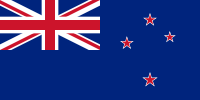 On April 19, 2010, Carlos Mamani, Chair of the United Nations Permanent Forum on Indigenous Issues (UNPFII) received a roaring applause when he stood up and declared, "I am very pleased that today, New Zealand has declared its support for the Declaration. In doing so, the Government of New Zealand has reaffirmed the principles of respect, non-discrimination and good faith enshrined in the Declaration."
On April 19, 2010, Carlos Mamani, Chair of the United Nations Permanent Forum on Indigenous Issues (UNPFII) received a roaring applause when he stood up and declared, "I am very pleased that today, New Zealand has declared its support for the Declaration. In doing so, the Government of New Zealand has reaffirmed the principles of respect, non-discrimination and good faith enshrined in the Declaration.""Today's announcement restores our mana and our moral authority to speak in international fora on issues of justice, rights and peace," stated New Zealand's Minister of Maori Affairs, Dr. Pita Sharples.
"While the declaration is non-binding, it both affirms accepted rights and establishes future aspirations. My objective is to build better relationships between Maori and the Crown, and I believe that supporting the declaration is a small but significant step in that direction," added New Zealand's Prime Minister, John Key.
When the UN General Assembly adopted the UN Declaration on the Right of Indigenous Peoples (hereinafter simply Declaration) on September 13, 2007: 143 countries voted in favour, 11 abstained, while 4 countries (New Zealand, Australia, Canada, and the United States) opposed the Declaration.
The day following New Zealand's announcement, Washington's U.N. Ambassador Susan Rice announced that the U.S. would be reviewing it's opposition to the Declaration.
Canadian Governor General Michaelle Jean, in her March 03, 2010 Speech from the Throne, declared: "A growing number of states have given qualified recognition to the United Nations Declaration on the Rights of Indigenous Peoples. Our Government will take steps to endorse this aspirational document in a manner fully consistent with Canada's Constitution and laws,"
Despite the apparent reversal of positions, it remains to be seen when Canada or the U.S. will affirm the Declaration, or what caveats they will demand in return.
View more information on the UN websiteView the United Nations Declaration on the Rights of Indigenous Peoples
View the 2010 Canadian Speech from the Throne
View April 19, 2010 United Nations press release
View April 20, 2010 New Zealand Government (office of Pita Sharples) press release
View April 20, 2010 New Zealand Government (office of John Key) press release
View April 20, 2010 The New Zealand Herald article
View April 23, 2010 Indian Country Today article
View May 3, 2010 Indian Country Today article
First Nations Take Oil Sands to Supreme Court
 The Supreme Court of Canada has granted intervenor status to Duncan''s First Nation (DFN) and Horse Lake First Nation (HLFN) in a case about oil sands, pipelines, oil sands infrastructure and other major projects. The First Nations are seeking Supreme Court of Canada assistance in defending their Aboriginal and Treaty rights in the face of mounting oil sands development.
The Supreme Court of Canada has granted intervenor status to Duncan''s First Nation (DFN) and Horse Lake First Nation (HLFN) in a case about oil sands, pipelines, oil sands infrastructure and other major projects. The First Nations are seeking Supreme Court of Canada assistance in defending their Aboriginal and Treaty rights in the face of mounting oil sands development.DFN Chief Don Testawich stated, "Our traditional territory is being overrun and cut to pieces by oil sands, major pipelines, gas fields and major power projects. Companies projects that will fuel unsustainable oil sands growth. Development on this scale is making our Treaty Rights meaningless and threatens our traditional way of life".
Chief Testawich added, "The governments of Alberta and Canada sit back and refuse to address our concerns. We are intervening before the Supreme Court because it is abundantly clear that neither the environment nor First Nations can expect to receive a fair hearing within Alberta, where oil sands revenues are at stake. We need help now and help fast".
The First Nations are taking this matter to the Supreme Court because of their mounting frustration over refusal by the governments and their regulators to act on earlier court decisions that direct governments to deal with their rights. Canada''s Supreme Court will hear views of First Nations, governments and industry in the Rio Tinto Alcan Inc. v. the Carrier Sekani Tribal Council case whichwill address the question of whether regulatory boards and tribunals have a duty to decide whether the Crown adequately consulted and accommodated First Nations'' concerns before granting approvals for resource development.
View March 12, 2010 Indigenous Peoples articleView April 9, 2010 CanadianClimateAction article
View April 12, 2010 Tar Sands Watch article
Mercury Killing Grassy Narrows Citizens
 A new translation of a health study by mercury expert Dr. Harada plus recent tests show impacts from mercury poisoning in Grassy Narrows First Nation community are worse now than in the 1970's.
A new translation of a health study by mercury expert Dr. Harada plus recent tests show impacts from mercury poisoning in Grassy Narrows First Nation community are worse now than in the 1970's.Dr. Harada's study found Health Canada safety mercury guidelines are too weak to protect people from long-term health impacts of low level mercury exposure, which is now worldwide due to industrial pollution from sources such as pulp mills, and coal power plants. The translated study was released on the 40th anniversary of the first fishing ban due to mercury contamination on the Wabigoon River.
Between 1962 and 1970, the Dryden mill, owned by Reed Incorporated and Great Lakes Forest Products Limited, dumped 20,000 pounds of mercury into the Wabigoon River. Members of Grassy Narrows First Nation converged on Queen's Park April 7th 2010 to protest decades of mercury poisoning in their community.
"We're demanding justice and action on this issue," states Grassy Narrows Chief Simon Fobister.
"The people of Grassy Narrows have raised their concerns for forty years, only to have them fall on deaf ears," states Ontario Regional Chief Angus Toulouse. "The demands of Grassy Narrows First Nation are simple and achievable - it is time for the government to listen to the voices of the First Nation."
View Free Grassy Narrows website Download translation of Dr. Harada's report (PDF)
Download translation of Dr. Harada's report (PDF)View April 6, 2010 Indigenous Peoples article
View April 6, 2010 CBC article
View April 6, 2010 Toronto Star article
View April 7, 2010 CBC article
View April 7, 2010 Indigenous Peoples article
Union of BC Indian Chiefs
Supports Opposition to Sun Peaks Inc.
 Neskonlith Indian Band's Chief Judy Wilson and Adams Lake Indian Band's Chief Nelson Leon have voiced their communities' alarm over lack of meaningful consultation in the face of the accelerated rate of community consultations with non-Native residents to incorporate Sun Peaks Resort as a municipal government.
Neskonlith Indian Band's Chief Judy Wilson and Adams Lake Indian Band's Chief Nelson Leon have voiced their communities' alarm over lack of meaningful consultation in the face of the accelerated rate of community consultations with non-Native residents to incorporate Sun Peaks Resort as a municipal government."The Union of BC Indian Chiefs fully supports the efforts of Chief Wilson and Chief Leon to ensure that the rights of their respective communities are recognized, respected and protected," stated Grand Chief Stewart Phillip, President of the Union of BC Indian Chiefs. "What started as a recreational tenure for a local ski hill, has turned into a massive four-season high-density resort which now desires to incorporate as a municipality."
In March 2007, the UBCIC Chiefs Council passed Resolution 2007-21 which noted the efforts in 2007 of Chief Wilson and Chief Leon to respond to the work of the Sun Peaks Incorporation Study Committee. Specifically, they stated their communities' opposition to the municipal incorporation and to the proposed Ministry of Forests' road construction to Sun Peaks Resort until their Aboriginal Title and Rights were addressed and their interests fully reconciled.
Grand Chief Phillip added, "The Union of BC Indian Chiefs fully supports meaningful consultation that respects Aboriginal Title and Rights and not a process where the economic or commercial interests of the privileged few trump ecological values and constitutionally protected Indigenous Title and Rights."
View February 4, 2010 Union of BC Indian Chiefs news releaseView February 6, 2010 Indigenous Peoples Issues & Resources article
First Nations Have Less Environmental Protection
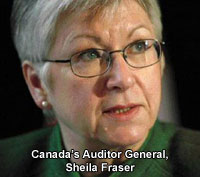 In the 2009, Auditor General of Canada, [Fall Report], Ms. Sheila Fraser stated that Indian and Northern Affairs Canada (INAC) and to a lesser extent Environment Canada, routinely fail to regulate environmental threats on reserves.
In the 2009, Auditor General of Canada, [Fall Report], Ms. Sheila Fraser stated that Indian and Northern Affairs Canada (INAC) and to a lesser extent Environment Canada, routinely fail to regulate environmental threats on reserves."As a result, people living on reserves have significantly less protection from environmental threats than other communities," says Ms. Fraser.
The report stated that contrary to regulations under the Indian Act, most landfill sites and sewage treatments on reserves operate without permits, monitoring, or enforcement by INAC. Septic systems, wastewater discharges, and hazardous waste are some of the environmental threats not subject to regulation on reserves, but which are strictly controlled off reserves.
The Auditor General also found that despite INAC's commitment to transfer more control to First Nations over management of their lands and resources, their access to land management programs and training is limited.
The INAC agreed with all of the comments made in the Auditor General's Report and states throughout the report that they will work to develop strategies to identify and close regulatory environmental gaps on reserves.
View 2009 Fall Report of the Auditor General of CanadaView November 3, 2009 Office of the Auditor General press release
View November 15, 2009 Intercontinential Cry article
Court Decisions - Aboriginal Rights and Métis Peoples
The Métis Law Summary provides discussion and legal analysis regarding topics such as:
- Métis Nation history
- defining Métis communities
- historic Métis trials
- the law of Aboriginal rights and how that law applies to the Métis
- recent Métis harvesting cases - Goodon (Manitoba), Powley (Ontario), Willison (B.C.), Laurin3 (Ontario) and Kipp Kelley (Alberta)
- Aboriginal title and Métis title
- constitutional interpretation and obligations (jurisdiction, interpretation of the term "Indian" in the Natural Resources Transfer Agreements, equality rights, etc.)
- class actions (residential schools, Métis veterans claim)
- Métis-specific legislation
 Download the Métis Law Summary 2006 (PDF)
Download the Métis Law Summary 2006 (PDF)View archives of the Métis Law Summary as well as other legal analysis
View 2003 The Métis Nation of Ontario - The Powley Case
View January 8, 2009 Manitoba Court Decision - Goodon Case (PDF)
View January 8, 2009 Manitoba Métis Federation article
View January 8, 2009 CBC article
Recent Court Decisions - Aboriginal Rights
Maliseet and Mi'kmaq and the Aboriginal Right to Timber for Domestic Purposes
'A practice undertaken for survival purposes can be considered integral to an Aboriginal community's distinctive culture.' - Supreme Court decision
In the Sappier Decision handed down on December 7, 2006, the Supreme Court of Canada upheld New Brunswick Court of Appeal decisions finding that the Maliseet and Mi'kmaq people have an Aboriginal right to harvest timber from Crown lands for domestic uses. The judges decided three New Brunswick men who took Crown wood to make furniture, build a home and burn as firewood were exercising their Aboriginal rights.
As the first Supreme Court decision to recognize an Aboriginal right to timber, the decision will have important practical implications - governments may have to review forest tenures and regulatory regimes to consider whether changes are required to accommodate any site-specific rights that may be established in the future. While the decision clearly rules out any commercial component to the right, existing commercial timber licensees may still be affected if governments are required to give priority to Aboriginal timber harvesting rights over commercial rights.
View the December 7, 2006 Supreme Court of Canada decision - R. v. Sappier; R. v. Gray
The Dene Tha', Ministry of the Environment and Mackenzie Gas Project - Duty of the Crown to Consult
On November 10, 2006, Justice Phelan of the Federal Court ruled in favour of the Dene Tha' First Nation, finding that the Crown breached and continues to breach their duty to consult the Dene Tha' concerning the Mackenzie Gas Project. This decision illustrates the significant risk resource developers may face if government fails in its consultation obligations to Aboriginal groups. Justice Phelan ordered hearings on any aspect of the project affecting Dene Tha' lands in northern Alberta to cease.
View the November 10, 2006 Federal Court of Canada decision - Dene Tha' First Nation v. Canada (Minister of Environment)
Mikisew Cree First Nation and the Ministry of Canadian Heritage - Crown Consultation Duties and Treaty Right Infringement
The November 24, 2005 Supreme Court of Canada judgment regarding the Mikisew Cree First Nation examined consultation and accommodation duties of the Crown in the context of historical treaty rights. The Supreme Court confirmed that while governments have the power under treaties to authorize land uses, which infringe on treaty rights, governments also have a duty to consult where the taking up of land affects those rights.
The case involved plans to build a winter road along reserve land through Wood Buffalo National Park to allow four communities in the Northwest Territories to access the highway system in Alberta. The Mikisew Cree First Nation objected to the proposed road on the grounds that it would infringe on their hunting and trapping rights under Treaty 8.
The Supreme Court overturned the Federal Court of Appeal's decision, and crafted a decision that balanced governments' need to manage lands and resources in the broader public interest with proper consideration of impacts on treaty rights in governments' decision-making processes. The Supreme Court found that, because the "taking up of land" adversely affected the First Nation's treaty right to hunt and trap, Parks Canada was required to consult with the Mikisew Cree before making its decision. As Parks Canada had failed to do so, the Supreme Court set aside the Minister's approval of the winter road, and sent the matter back to the Minister for reconsideration in accordance with the decision.
View the November 24, 2005 Supreme Court of Canada decision - Mikisew Cree First Nation v. Canada (Minister of Canadian Heritage)
Haida Nation, the BC Ministry of Forests and Weyerhaeuser - Crown Duties of Consultation and Accommodation and Unproven Aboriginal Rights and Title
On November 18, 2004, the Supreme Court of Canada released its decision in Haida Nation v. British Columbia and Weyerhaeuser.
The unanimous 7-0 judgment delivered by the Chief Justice Beverley McLachlin found that the Crown does have a duty to consult the Haida Nation; however, the duties of consultation and accommodation to the Haida Nation do not extend to Weyerhaeuser. The Court did acknowledge that there are some circumstances where third parties could be liable to Aboriginal Peoples.
The Haida Nation challenged the Minster of Forests' decision to replace a Tree Farm Licence (TFL 39), an exclusive forestry tenure that covers one quarter of the land base of Haida Gwaii, the homeland of the Haida Nation.
The Supreme Court of Canada affirmed that the Haida have a good case in support of Aboriginal Title and a strong case for the Aboriginal Right to harvest red cedar. Therefore, the Court held that the Province has a legally enforceable duty to consult the Haida with respect to TFL 39 and that the Province failed to fulfill this duty when replacing and approving a transfer of TFL 39. The Haida are not required to prove their Rights or Title in court before the duty of consultation arises: a key clarification of the law.
The decision is important as it set out the scope and nature of the duties of consultation and accommodation, as owed by the Crown, and, in limited procedural circumstances, by industry, to Aboriginal peoples whose Aboriginal rights are affected by development on their traditional territories. The Supreme Court outlined a principle described as the "honour of the Crown" as the driving force behind the Crown's duty to consult and accommodate Aboriginal peoples and held that the 'honour of the Crown' requires interim protection of Aboriginal interests pending proof or resolution.
View the November 18, 2004 Supreme Court of Canada decision - Haida Nation v. British Columbia (Minister of Forests)
The Taku River Tlingit First Nation and the BC Government - Crown Duties of Consultation and Accommodation
Similar to the Haida decision (see above), the November 18, 2004 Supreme Court of Canada decision regarding the Taku River Tlingit First Nation v. British Columbia, declared that the Crown has a duty to consult and accommodate in cases where Aboriginal title and rights have not been proved in court.
The Taku River Tlingit challenged the 1998 decision to grant Redfern Resources a project approval certificate to reopen and build a road to the old Tulsequah Chief mine, which had previously been operated in the 1950's. The certificate was granted despite the objections of the Taku and followed an extensive three-and-a-half year environmental review process.
The Supreme Court ruled that the Province was under a duty to consult with the Taku River Tlingit in making the decision to reopen the mine. The Province was aware of the Taku River Tlingit's claims of Aboriginal rights and title by virtue of its involvement in the treaty negotiation process, and also knew that the decision to reopen the mine had the potential to adversely affect the substance of the Taku River Tlingit's claims. The Court clarified that an Aboriginal group need not be accepted into the treaty process for the Crown's duty to consult to apply to them. However, the Court suggested that acceptance of a title claim for negotiation establishes a prima facie case in support of Aboriginal rights and title.
The decision means that governments need to ensure they have fulfilled their duty to consult with First Nations before granting interests to lands where they may have rights The decision also established a strong legal foundation for the Tlingits' role as stewards of their territory, which allows them to continue their work to sustain the lands and resources on which their future depends.
View the November 18, 2004 Supreme Court of Canada decision - Taku River Tlingit First Nation v. British Columbia (Project Assessment Director)
 2002-2014
2002-2014


 The Ontario Throne Speech, following the recent Ontario election, was delivered November 22, 2011. The speech set the agenda for Dalton McGuinty's third term as Premier.
The Ontario Throne Speech, following the recent Ontario election, was delivered November 22, 2011. The speech set the agenda for Dalton McGuinty's third term as Premier.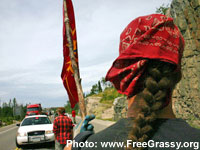 In a landmark August 16, 2011 decision, Ontario's Superior Court ruled that the province cannot authorize timber and logging if the operations infringe on federal treaty promises protecting aboriginal rights to traditional hunting and trapping.
In a landmark August 16, 2011 decision, Ontario's Superior Court ruled that the province cannot authorize timber and logging if the operations infringe on federal treaty promises protecting aboriginal rights to traditional hunting and trapping. Manitoba First Nations have taken their plea for an independent review of Manitoba Hydro's impact on flooding all the way to the United Nations.
Manitoba First Nations have taken their plea for an independent review of Manitoba Hydro's impact on flooding all the way to the United Nations.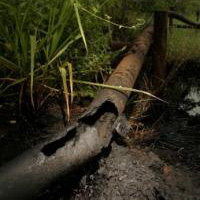 28,000 barrels of oil spilled Friday April 29th from a 45-year-old pipeline owned by Plains Midstream Canada Rainbow pipeline, located in the Peace River region of Alberta, near the Lubicon Cree Nation community of Little Buffalo. Regulators did not report the spill, the largest in Albertan history since 1975, until after the May 2nd, 2011 Canadian election.
28,000 barrels of oil spilled Friday April 29th from a 45-year-old pipeline owned by Plains Midstream Canada Rainbow pipeline, located in the Peace River region of Alberta, near the Lubicon Cree Nation community of Little Buffalo. Regulators did not report the spill, the largest in Albertan history since 1975, until after the May 2nd, 2011 Canadian election. First Nations youth leader Jasmine Thomas, who represents the five First Nations of the Yinka Dene Alliance in British Columbia, attended the Canadian Imperial Bank of Commerce (CIBC) annual general meeting (AGM) in Winnipeg to warn shareholders and executives: Do not finance Enbridge or its Northern Gateway Pipeline project, since Enbridge fails to respect the authority of First Nations along the proposed pipeline route.
First Nations youth leader Jasmine Thomas, who represents the five First Nations of the Yinka Dene Alliance in British Columbia, attended the Canadian Imperial Bank of Commerce (CIBC) annual general meeting (AGM) in Winnipeg to warn shareholders and executives: Do not finance Enbridge or its Northern Gateway Pipeline project, since Enbridge fails to respect the authority of First Nations along the proposed pipeline route. In a November 12, 2010 decision Canada's Federal Court quashed a mining company's permit to explore on the traditional lands of two Northwest Territories First Nations. The court concluded the First nations had not been properly consulted.
In a November 12, 2010 decision Canada's Federal Court quashed a mining company's permit to explore on the traditional lands of two Northwest Territories First Nations. The court concluded the First nations had not been properly consulted. Madame Justice Sue Cooper, of the Nunavut Court of Justice, granted a temporary injunction August 8th, 2010, preventing the start of a seismic testing project in ocean waters off north Baffin Island.
Madame Justice Sue Cooper, of the Nunavut Court of Justice, granted a temporary injunction August 8th, 2010, preventing the start of a seismic testing project in ocean waters off north Baffin Island. A June 2010 study released by Harvard Law School's International Human Rights Clinic (IHRC) concludes that British Columbia's mining laws are unfair, unconstitutional, and in need of urgent reform.
A June 2010 study released by Harvard Law School's International Human Rights Clinic (IHRC) concludes that British Columbia's mining laws are unfair, unconstitutional, and in need of urgent reform. A long-standing First Nation land claim over Toronto lands has been settled. Members of the Mississaugas of the New Credit (MNC) voted to accept a $145-million land-claims settlement with Canada, May 2010.
A long-standing First Nation land claim over Toronto lands has been settled. Members of the Mississaugas of the New Credit (MNC) voted to accept a $145-million land-claims settlement with Canada, May 2010.